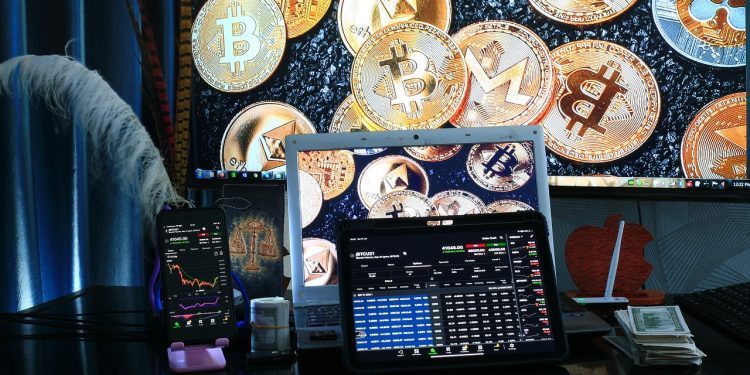Bitcoin, the world’s first cryptocurrency, is a decentralized digital currency that has sparked countless innovations in finance, technology, and digital economics. However, Bitcoin’s journey has not been without obstacles. Its success has led to significant debates within the Bitcoin community, resulting in several hard forks – fundamental splits in the blockchain that create new cryptocurrencies with distinct rules, goals, and communities. These forks are not merely technical divergences; they reflect deep ideological differences regarding how Bitcoin should function and evolve.
In this article, we’ll delve into the origins of Bitcoin forks, with a particular focus on the most prominent ones: Bitcoin Cash (BCH) and Bitcoin SV (Satoshi Vision). Additionally, we’ll explore other significant forks, discussing their objectives, characteristics, and how they stand apart from Bitcoin.
Understanding Bitcoin Forks
A fork in cryptocurrency occurs when a blockchain splits into two independent chains, each with its own set of rules. Forks often happen when developers or the community want to change or improve a cryptocurrency’s protocol. In the case of Bitcoin, forks reflect diverse visions and innovations but also philosophical disputes within the community.
There are two main types of forks:
- Soft Forks: These are backward-compatible updates, meaning nodes (computers on the network) running the old software can still interact with nodes running the new version. Soft forks do not create a new cryptocurrency, and they allow for protocol changes without splitting the blockchain.
- Hard Forks: Hard forks are not backward-compatible, meaning that nodes that do not adopt the new software cannot validate transactions on the new chain. Hard forks result in a permanent split, creating two distinct blockchains. In the case of Bitcoin, each hard fork has created a new cryptocurrency, such as Bitcoin Cash or Bitcoin SV.
Why Do Bitcoin Forks Happen?
Bitcoin forks are driven by a combination of technical, economic, and philosophical motivations. The most common reasons include:
- Scalability Issues: As Bitcoin became more popular, its 1MB block size limited the number of transactions processed per block. This led to network congestion, higher fees, and slower transactions. Many forks, including Bitcoin Cash, aimed to address scalability by increasing the block size.
- Decentralization vs. Performance: A core value of Bitcoin is decentralization, but some see trade-offs between this ideal and the practical need for a more efficient network. Larger blocks, for instance, allow more transactions but may lead to greater centralization as fewer nodes can afford the storage and computational power required to validate large blocks.
- Differing Visions: Bitcoin was designed to be “peer-to-peer electronic cash.” Some in the Bitcoin community argue that Bitcoin should be primarily a digital currency, focusing on low fees and fast transactions. Others see Bitcoin as “digital gold” – a store of value that prioritizes security and decentralization over transaction speed.
Bitcoin Cash (BCH): The First Major Bitcoin Fork
Launch Date: August 1, 2017
Objective: Increase transaction capacity by raising the block size limit
Bitcoin Cash was the first major hard fork of Bitcoin, and it emerged from a dispute over Bitcoin’s scalability. Led by Roger Ver and other prominent figures, Bitcoin Cash aimed to solve Bitcoin’s transaction speed and fee issues by increasing the block size.
Key Features of Bitcoin Cash
- Increased Block Size: Bitcoin Cash increased Bitcoin’s original 1MB block size to 8MB, later expanded to 32MB. This larger block size allows more transactions per block, theoretically reducing fees and speeding up the network.
- Lower Transaction Fees: With more transactions processed in each block, Bitcoin Cash can handle more users without causing significant fee spikes during periods of high activity. This makes Bitcoin Cash more attractive for everyday transactions and small payments.
- Focus on Usability: Bitcoin Cash supporters argue that its lower fees and higher transaction throughput make it more suitable as a “digital cash” system, which aligns more closely with Satoshi Nakamoto’s original vision.
Criticisms of Bitcoin Cash
Bitcoin Cash has faced criticism for compromising Bitcoin’s decentralization. Larger block sizes mean that validating the blockchain requires more computational power and storage, potentially centralizing mining and node operation to those with substantial resources. Additionally, some critics argue that Bitcoin Cash’s increased focus on transactional efficiency undermines Bitcoin’s primary role as a secure store of value.
Bitcoin SV (BSV): Pursuing “Satoshi’s Vision”
Launch Date: November 15, 2018
Objective: Restore Bitcoin’s original protocol with a focus on scalability for enterprise-level applications
Bitcoin SV, or “Bitcoin Satoshi Vision,” is a hard fork of Bitcoin Cash and represents another schism within the Bitcoin community. It was led by Craig Wright and Calvin Ayre, who believed that Bitcoin Cash was diverging from the original intent of Bitcoin as outlined in Satoshi Nakamoto’s white paper. They proposed Bitcoin SV as a way to “restore Satoshi’s vision” and promote a scalable blockchain that can handle high transaction volumes.
Key Features of Bitcoin SV
- Large Block Sizes: Bitcoin SV initially set its block size at 128MB, later increased to 2GB, making it the blockchain with the largest block size among Bitcoin derivatives. This allows for high transaction volumes and potentially new applications for the blockchain.
- Enterprise Use: BSV proponents envision the blockchain not only as a currency but as a utility for enterprise applications, including data management, smart contracts, and more. They claim that BSV’s scalability and stability make it ideal for business use.
- Protocol Stability: Bitcoin SV seeks to avoid frequent protocol changes, allowing developers and businesses to build on a predictable and stable foundation.
Criticisms of Bitcoin SV
Bitcoin SV’s immense block size has raised concerns over centralization and network security. Larger blocks demand higher computational resources, centralizing mining power among a few well-funded participants. This could limit the network’s decentralization and increase the risk of attacks. Additionally, Bitcoin SV has faced criticism for its association with Craig Wright, who has controversially claimed to be Satoshi Nakamoto, leading to skepticism and legal disputes within the community.
Other Notable Bitcoin Forks
Beyond Bitcoin Cash and Bitcoin SV, several other Bitcoin forks have emerged over the years, each with its own unique characteristics, goals, and communities.
1. Bitcoin Gold (BTG)
Launch Date: October 24, 2017
Objective: Democratize mining by making it accessible to a wider range of users
Bitcoin Gold was created to address Bitcoin’s mining centralization. By adopting the Equihash mining algorithm, Bitcoin Gold enabled GPU-based mining, reducing the reliance on expensive and specialized mining hardware (ASICs). Bitcoin Gold aims to bring Bitcoin mining back to everyday users, promoting a more decentralized network.
Key Features of Bitcoin Gold
- ASIC Resistance: By using Equihash, an algorithm that is more compatible with GPU mining, Bitcoin Gold discourages the use of ASICs, which are costly and tend to centralize mining power.
- Focus on Decentralization: Bitcoin Gold’s mission is to make mining more democratic and prevent large mining corporations from monopolizing Bitcoin production.
Criticisms of Bitcoin Gold
Bitcoin Gold has faced security concerns, including a significant 51% attack in 2018 that led to the theft of millions of dollars from exchanges. This highlighted vulnerabilities in smaller networks and raised questions about the security trade-offs of ASIC resistance.
2. Bitcoin Diamond (BCD)
Launch Date: November 2017
Objective: Improve transaction speed and reduce costs, with a focus on privacy
Bitcoin Diamond aimed to improve on Bitcoin by increasing transaction capacity and adding optional privacy features. With a larger maximum block size and an increased total supply, Bitcoin Diamond sought to make Bitcoin more accessible to a broader audience.
Key Features of Bitcoin Diamond
- Increased Supply: Bitcoin Diamond has a maximum supply of 210 million coins, compared to Bitcoin’s 21 million. This was done to make individual coins more affordable for new investors.
- Privacy Features: Bitcoin Diamond incorporates privacy-focused technologies, allowing for optional private transactions.
Criticisms of Bitcoin Diamond
Bitcoin Diamond has been criticized for its relatively low adoption and market share, as well as its limited technical innovation. Some see the increased supply as arbitrary and question the project’s long-term viability.
3. SegWit2x
Launch Date: Scheduled for November 2017 but canceled
Objective: Increase Bitcoin’s block size to 2MB and activate Segregated Witness (SegWit) as a scaling solution
SegWit2x was a proposed hard fork intended to implement both SegWit and a 2MB block size limit. However, it was ultimately canceled due to a lack of consensus within the community. SegWit2x remains notable because it demonstrated the intensity of debate around Bitcoin’s scalability and paved the way for Bitcoin Cash as an alternative solution.
How Do Bitcoin Forks Compare to Bitcoin?
Each Bitcoin fork has its unique goals and features, often addressing perceived limitations in the original Bitcoin network. However, these forks come with trade-offs, as each adjustment to the protocol affects aspects like security, decentralization, and usability. Here’s how some of the most notable forks compare to Bitcoin:
| Fork | Block Size | Main Objective | Notable Features |
|---|---|---|---|
| Bitcoin Cash | 32MB | Faster transactions, lower fees | Larger block size for scalability |
| Bitcoin SV | 2GB | Scalability for enterprise applications | Massive block size, stable protocol |
| Bitcoin Gold | 1MB | Decentralized mining, ASIC resistance | Equihash for GPU mining |
| Bitcoin Diamond | 8MB | Improved accessibility, privacy features | Increased supply, optional privacy |
| SegWit2x | Canceled | Larger block size with SegWit | Abandoned due to lack of support |
Conclusion: The Ongoing Evolution of Bitcoin Forks
Bitcoin forks reflect a constantly evolving landscape in which developers, miners, and users aim to optimize Bitcoin’s technology while adhering to their own visions of cryptocurrency. While each fork addresses specific issues within Bitcoin, they also come with their own limitations and trade-offs. The diversity of forks like Bitcoin Cash, Bitcoin SV, and others highlights the vast potential of blockchain technology to support various use cases, from peer-to-peer payments to enterprise-level applications.
Bitcoin, however, remains the leading cryptocurrency and a symbol of digital sovereignty. While its forks explore alternatives, Bitcoin’s foundational role as a secure, decentralized store of value continues to draw the most support. The enduring popularity and success of Bitcoin forks like Bitcoin Cash and Bitcoin SV suggest that the future of cryptocurrency will likely include a wide array of solutions tailored to different user needs, but Bitcoin’s position as “digital gold” remains unchallenged for many in the crypto space.
















